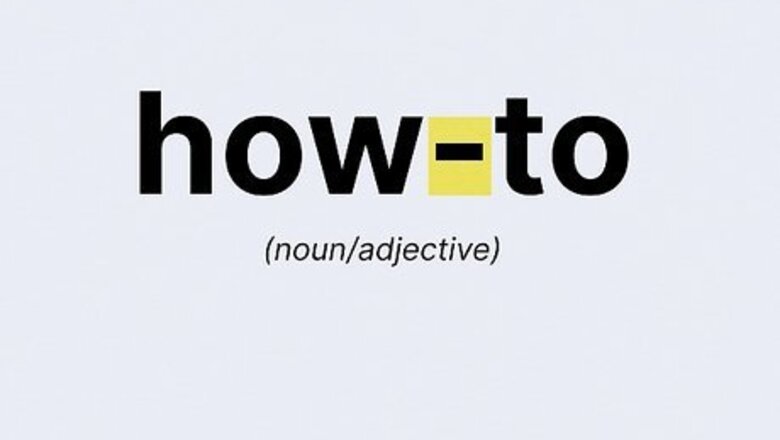
views
- Include a hyphen in “how-to” when you’re referring to a set of instructions.
- Leave the hyphen out of “how to” when you’re using “how” as a conjunction (a word that connects a clause or sentence, like “but” or “and”).
- Pluralize “how-to” as "how-tos" rather than "how-to’s".
How-to vs. How to

Hyphenate “how-to” when talking about a set of instructions. How-to can be used either as a noun (a person/place/thing/idea) or an adjective (a word used to modify/describe a noun). In both cases, “how-to” with a hyphen refers to a set of instructions or a step-by-step tutorial about completing a task. When used as an adjective, “how-to” is often paired with words like “book,” “guide,” “article,” or “video.” Example of how-to as a noun: “wikiHow has a great how-to for cleaning a laptop.” Example of how-to as an adjective: “wikiHow’s website has tons of how-to articles for just about every topic.” “How-to” is mostly used as a noun in American English—it’s not as common in British English.

Keep “how to” unhyphenated when using “how” as a conjunction. The word “how” serves many purposes in the English language. However, when paired with the word to, “how” is a conjunction (a clause- or sentence-connecting word) that means “the manner or way in which” something happens (according to the Random House Unabridged Dictionary). Let’s take a closer look: “Caleb doesn’t know how to make macaroni and cheese.” In this example, “how” refers to Caleb’s lack of ability to prepare a bowl of mac and cheese. “Angela knows how to play baseball.” In this example, “how” refers to Angela’s ability to play baseball.
Is it "how-to’s" or "how-tos"?
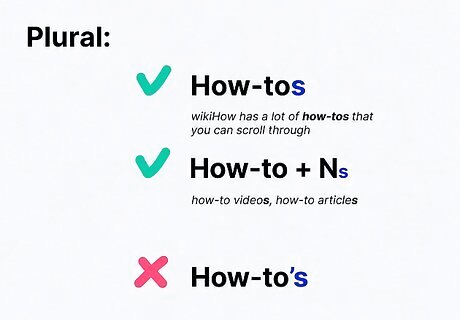
"How-tos" is the correct way to pluralize "how to". According to the basic rules of English grammar, apostrophes are only used to show possession or to form contractions. In very rare cases, apostrophes can be used to pluralize all lowercase letters (“Be sure to dot your i’s before signing that contract”), the capital letters A, I, M, and U (“She got all A’s this semester”), words that stand for themselves (“There are no but’s about it”), or abbreviations ending in periods (“A lot of Ph.D.’s work at this school”). The word “how-to” doesn’t fall under these rules, so it can be pluralized as “how-tos.” Example: “wikiHow has a lot of how-tos that you can scroll through.” No matter how you spell it, “how-tos” doesn’t really roll off the tongue. You’re better off using “how-to” as an adjective and pluralizing the word that it’s describing (like “how-to videos” or “how-to articles”).
When to Use Hypens
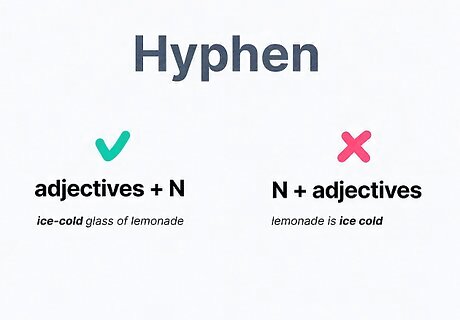
Compound adjectivesUse a hyphen to turn two individual words into a single adjective (like “well-established scientist” or “caramel-covered fruit”). Only hyphenate adjectives when they go in front of the noun they’re describing; otherwise, leave them unhyphenated. Example of when to hyphenate: The ice-cold glass of lemonade is so refreshing. Example of when not to hyphenate: The refreshing glass of lemonade is ice cold.
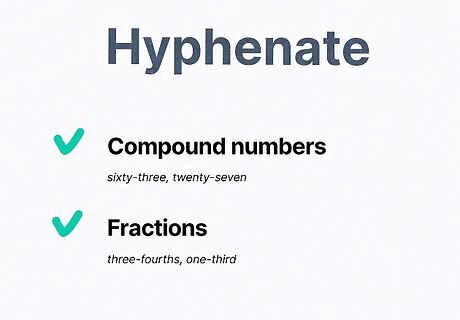
Compound numbers and fractionsAlways use a hyphen when you’re writing out large compound numbers (up to 99), like sixty-three or twenty-seven. Written-out fractions also need to be hyphenated, like three-fourths or one-third. Example: My grandfather turned eighty-two today.
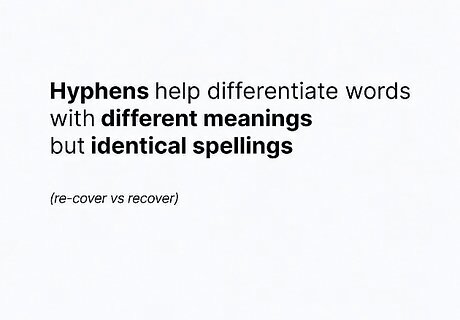
Confusing spelling or wordingHyphens can help split up words that would otherwise have double vowels (like “semi-inground”). They also help differentiate words with different meanings but identical spellings (like “re-cover” versus “recover”). The sentence “I need to re-cover my car” has a much different meaning than “I need to recover my car.”
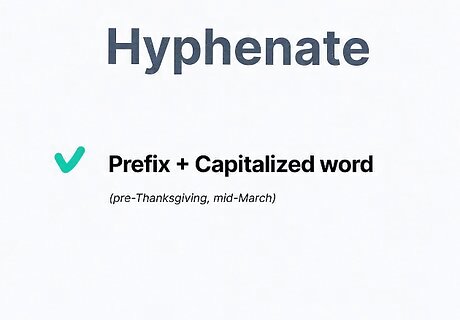
Prefixes paired with capitalized wordsInclude a hyphen whenever you’re combining a prefix with a capitalized letter. Words like pre-Thanksgiving and mid-March all use a hyphen to separate the prefix from the capitalized letter in the next word.
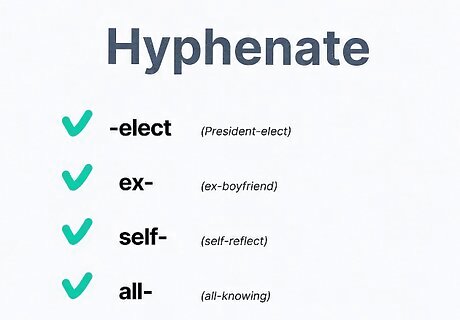
The suffix -elect and prefixes ex-, self-, and all-Always use the hyphenated suffix -elect whenever you’re talking about a recently elected official (like President-elect). Hyphens are also required for the prefixes ex-, self-, and all- (like ex-boyfriend, self-reflect, and all-knowing).
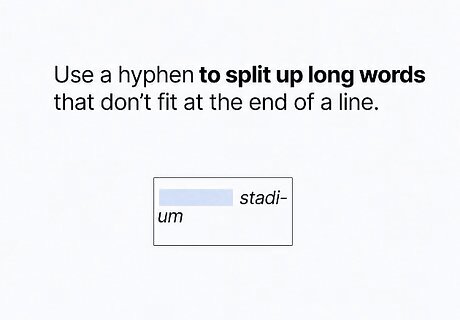
Line breaksUse a hyphen to split up long words that don’t fit at the end of a line. Always place the hyphen at the end of a proper syllable (like “sta-di-um” rather than “stad-ium”), or use the hyphen in an already hyphenated word as a breaking point (like “multi-millionaire”). If the last word in a line ends with -ing, include the hyphen right before the suffix (like “writ-ing”). If there’s a double consonant right before the -ing, stick the hyphen in-between the consonants (like “swim-ming”).




















Comments
0 comment